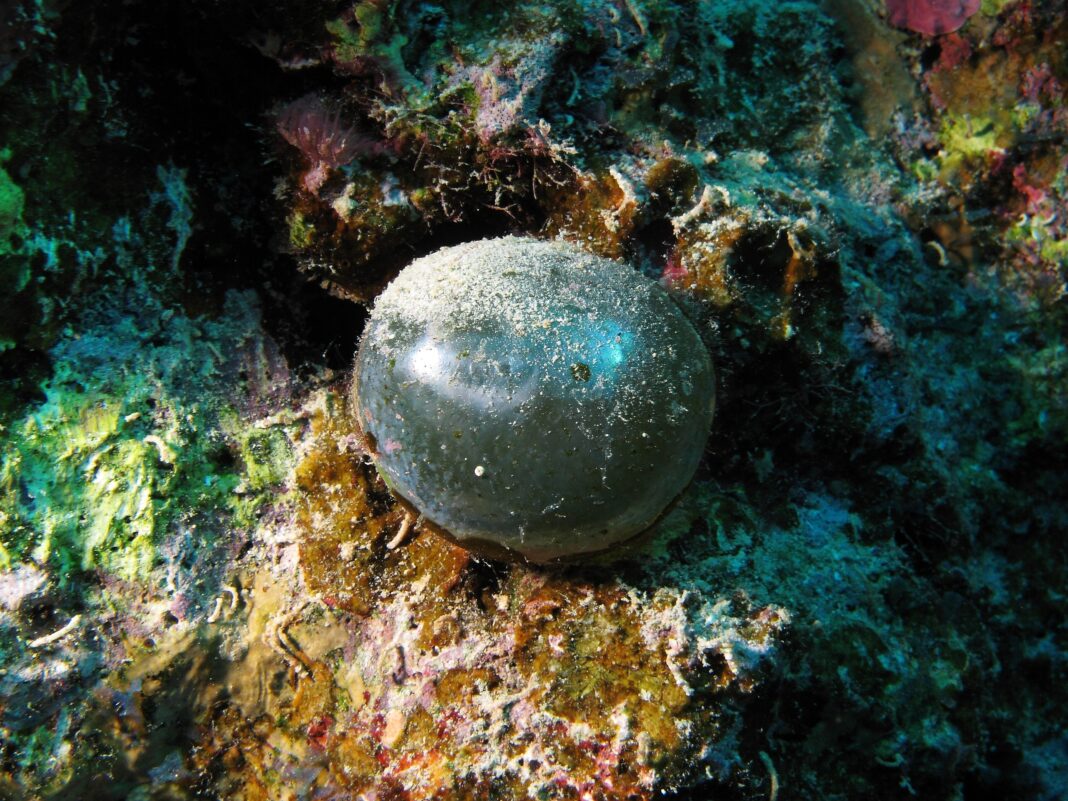You might notice these small green blobs washed up on the beach in Buen Hombre where they appear as transparant water-blobs. Or if you put on a diving mask you might see them in their more favorable condition sitting on the seabed as green or brownish perfect shiny balls.
This living single cell organism is special as it is odd. This is one of the ocean’s most surprising secrets: Valonia ventricosa, often called the sailor’s eyeball. This curious green orb is not a shell, not a bubble, and not a jellyfish.
It’s a type of algae—but unlike the clumps of seaweed most of us are used to seeing, this one grows as a single cell. In fact, it’s one of the largest single-celled organisms on Earth, sometimes reaching the size of a golf ball.
What Exactly Is It?
Valonia ventricosa belongs to a group of green algae and can be found in warm seas across the globe, including the Caribbean, Mediterranean, and Indo-Pacific. You might see it clinging to rocks or coral under the surface, or rolling gently in the surf after being dislodged.
The green sphere is filled with fluid and its surface acts as a thin but tough membrane. It’s reflective and often translucent, giving it a shimmering, jewel-like appearance underwater. Some varieties take on a deep emerald tone, while others appear more silvery or bluish in bright sunlight.
Despite its alien look, it plays a role in the reef ecosystem—helping to stabilize small rubble and acting as a minor part of the food web. But mostly, it just floats quietly through its life, absorbing sunlight and going largely unnoticed except by curious snorkelers or beachcombers.
Why Tourists Notice It
Visitors often mistake the sailor’s eyeball for sea glass, marbles, or even jellyfish eggs. Its smooth surface and unusual size invite closer inspection. In some areas, dozens of them may wash up after a storm or appear in tide pools.
For nature lovers, it’s a reminder that the ocean hides strangeness in plain sight. For science-minded travelers, it’s a real-life example of biological scale and adaptation. And for photographers, it’s an irresistible subject—especially when backlit by sun and surf.
Should You Pick It Up?
There’s no harm in gently holding one if you find it loose on the shore. It’s not toxic or dangerous. But remember: it’s alive. If you’re snorkeling and see one anchored to coral or rocks, best to leave it undisturbed.
Some people collect the broken shells, which dry into thin, papery fragments—though they’re fragile and rarely make it home in one piece. They’re not commercially valuable, and there’s no folklore or superstition attached—just quiet fascination.
A Reminder to Look Closer
Valonia ventricosa won’t appear in most guidebooks. It’s not colorful like a parrotfish or grand like a sea turtle. But it captures something essential about the marine world: beauty in the overlooked, and complexity in the simple.
Next time you’re on a beach walk or snorkeling in clear shallows, keep an eye out for that shimmering green sphere. You’ll be looking at one of the largest single cells on Earth—right there in the palm of your hand.


